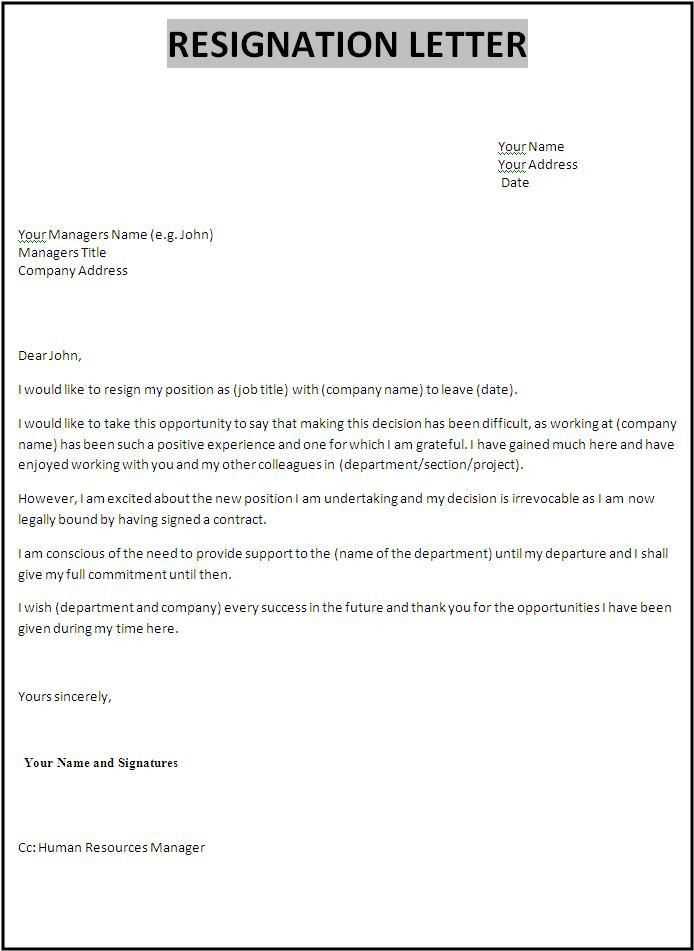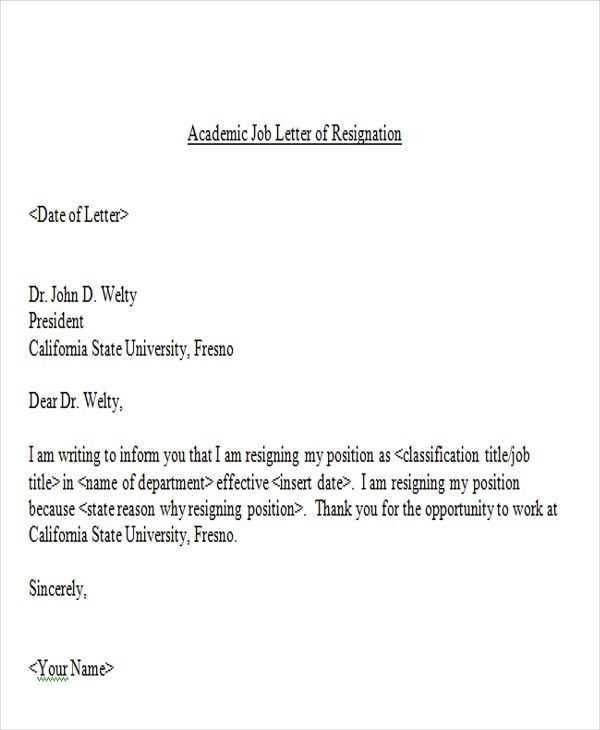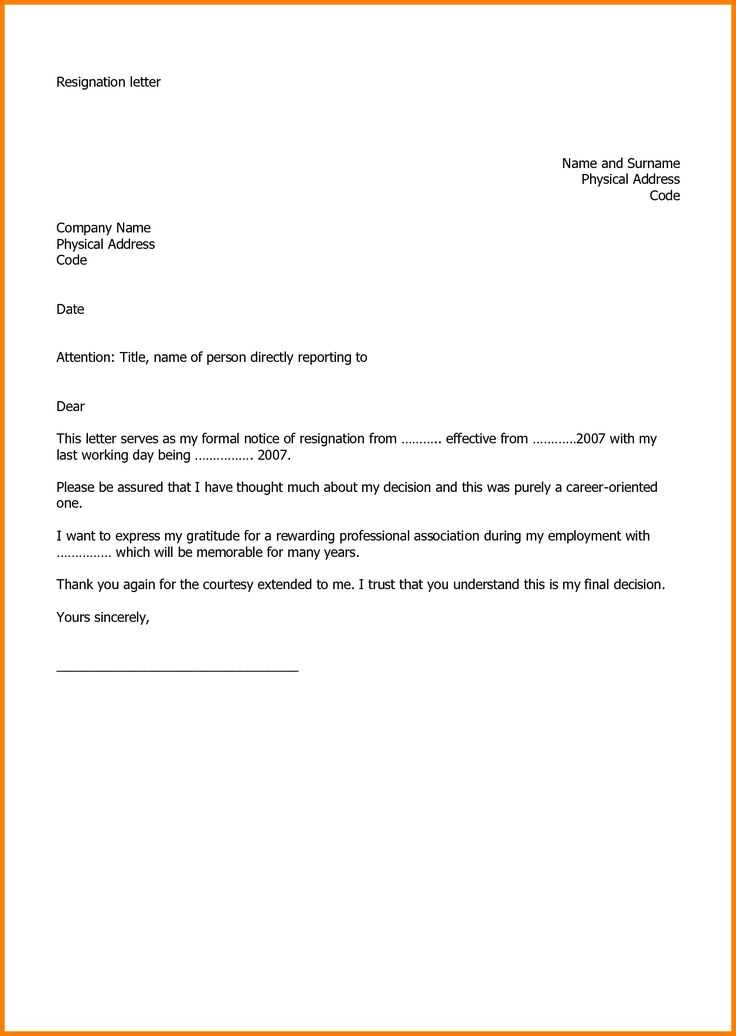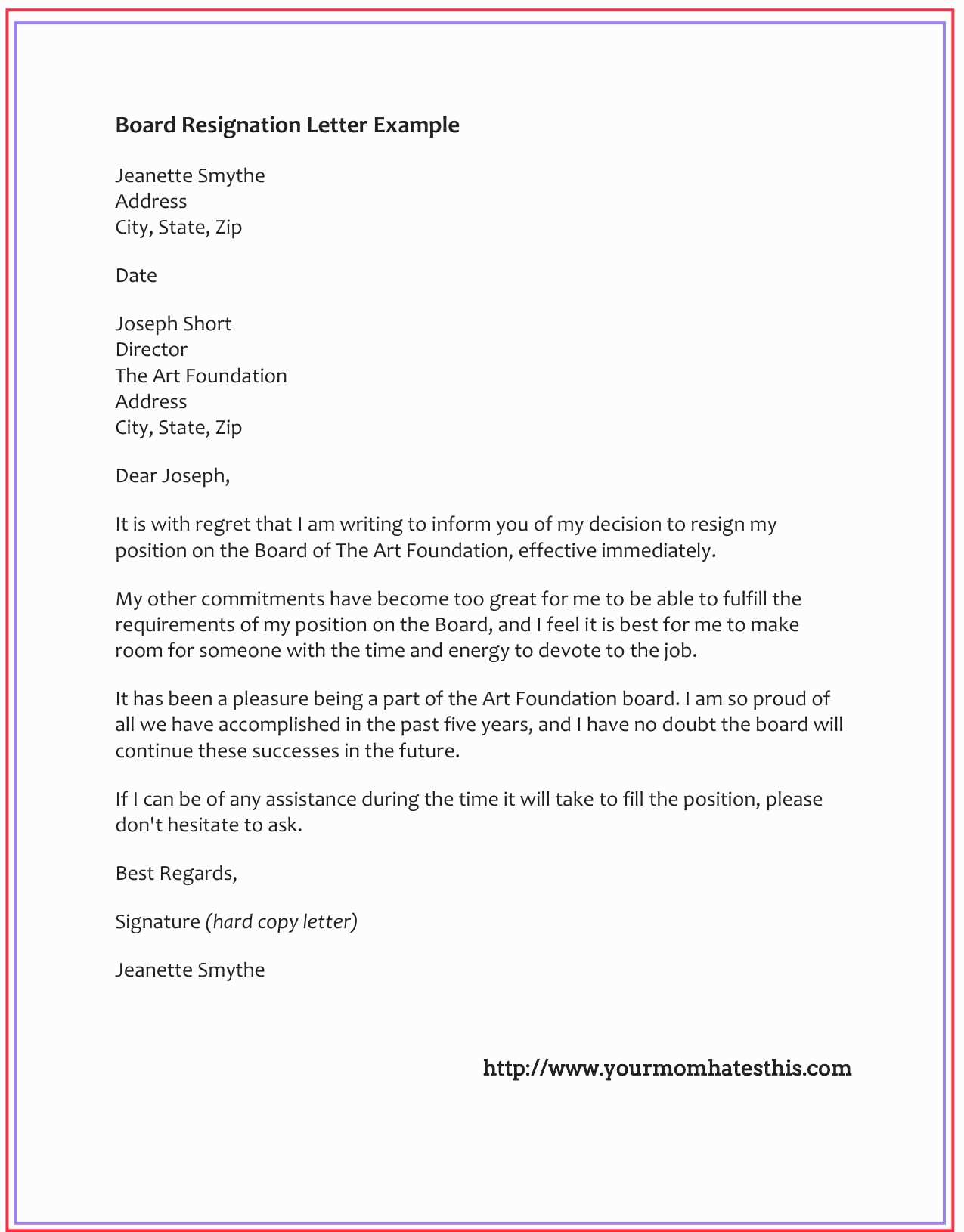Professional Resignation Letter Template for a Smooth Transition

Leaving a job can be a delicate process, requiring a well-structured message to inform your employer about your decision. It’s essential to convey your intent professionally and respectfully, ensuring a smooth transition for both you and the company. A thoughtfully crafted document is a key element in this process, helping maintain a positive relationship after your departure.
Key Elements to Include

When drafting your formal communication, there are a few critical components to ensure clarity and professionalism:
- Clear Intent – Clearly state your decision to leave and the effective date.
- Gratitude – Express appreciation for the opportunity and experience.
- Reason (Optional) – While not mandatory, briefly explaining your motivation can be helpful.
- Contact Information – Offer ways for your employer to reach you after your departure.
Crafting Your Exit Statement

It’s important to keep the tone polite and concise. Start by addressing your supervisor, then provide the necessary details. Avoid negativity or overly personal reasons for your decision. Here’s an example:
Dear [Manager's Name], I am writing to formally announce my departure from [Company Name], effective [Date]. I have enjoyed working with you and the team, and I am grateful for the opportunities to grow during my time here. Please let me know if there is anything I can do to assist in the transition. I look forward to staying in touch. Sincerely, [Your Name]
Common Mistakes to Avoid

- Being Too Abrupt – While brevity is important, make sure the message is clear and respectful.
- Leaving Without Notice – Always give adequate time for your employer to prepare for your departure.
- Burning Bridges – Even if your experience was less than ideal, remain professional and tactful.
Next Steps After Submitting Your Notice
Once you’ve submitted your communication, focus on making the transition as smooth as possible. Offer assistance in training your replacement or wrapping up outstanding tasks. Keep the lines of communication open with your employer to ensure the process is positive for both parties.
htmlEdit
How to Write a Resignation Letter
Key Elements of a Resignation Letter
Tips for Crafting a Polite Exit
Common Mistakes to Avoid in Resignations
Resignation Letter Samples for Various Roles
How to Submit Your Resignation Professionally
Next Steps After Resigning
When moving on from a current position, it’s essential to communicate your decision in a clear, respectful manner. This communication serves as a formal announcement of your departure and helps maintain a positive relationship with your employer. Approaching this process thoughtfully ensures a smooth transition for both parties.
Key Elements:
There are a few crucial points to include in your message of departure. Start with a clear statement of your decision to leave. Follow this with a brief explanation of your reason, if appropriate. Express gratitude for the opportunity, and offer assistance with transitioning your duties. It’s important to conclude with a professional closing, leaving the door open for future contact.
Crafting a Polite Exit:
To ensure your message reflects professionalism, focus on being concise yet appreciative. Even if you’re leaving under difficult circumstances, avoid negative language or criticism. Keeping the tone courteous helps preserve your reputation and leaves a positive impression on your employer.
Common Mistakes to Avoid:
It’s important to steer clear of over-explaining your reasons for leaving or venting frustrations. Avoid making your decision sound impulsive or unplanned. Additionally, ensure your message is addressed to the right person, and avoid sending it through informal channels like text or social media.
Examples for Various Roles:
Different positions may require slightly varied approaches when stepping away. Tailoring your message based on your role, tenure, and relationship with the employer can help create an appropriate tone. For instance, a senior executive may take a more strategic approach, while a new employee may keep it brief.
Submitting Professionally:
Once you’ve crafted your message, submit it through the proper channels. This may include a direct meeting with your manager or submitting the letter via email. Avoid submitting your resignation impulsively; it’s better to plan and time your announcement carefully.
Next Steps:
After informing your employer, be prepared to assist in the transition process. This might involve training a replacement, completing unfinished tasks, or handing over key information. Following up with a clear, organized plan will demonstrate your professionalism and commitment to ensuring a smooth departure.